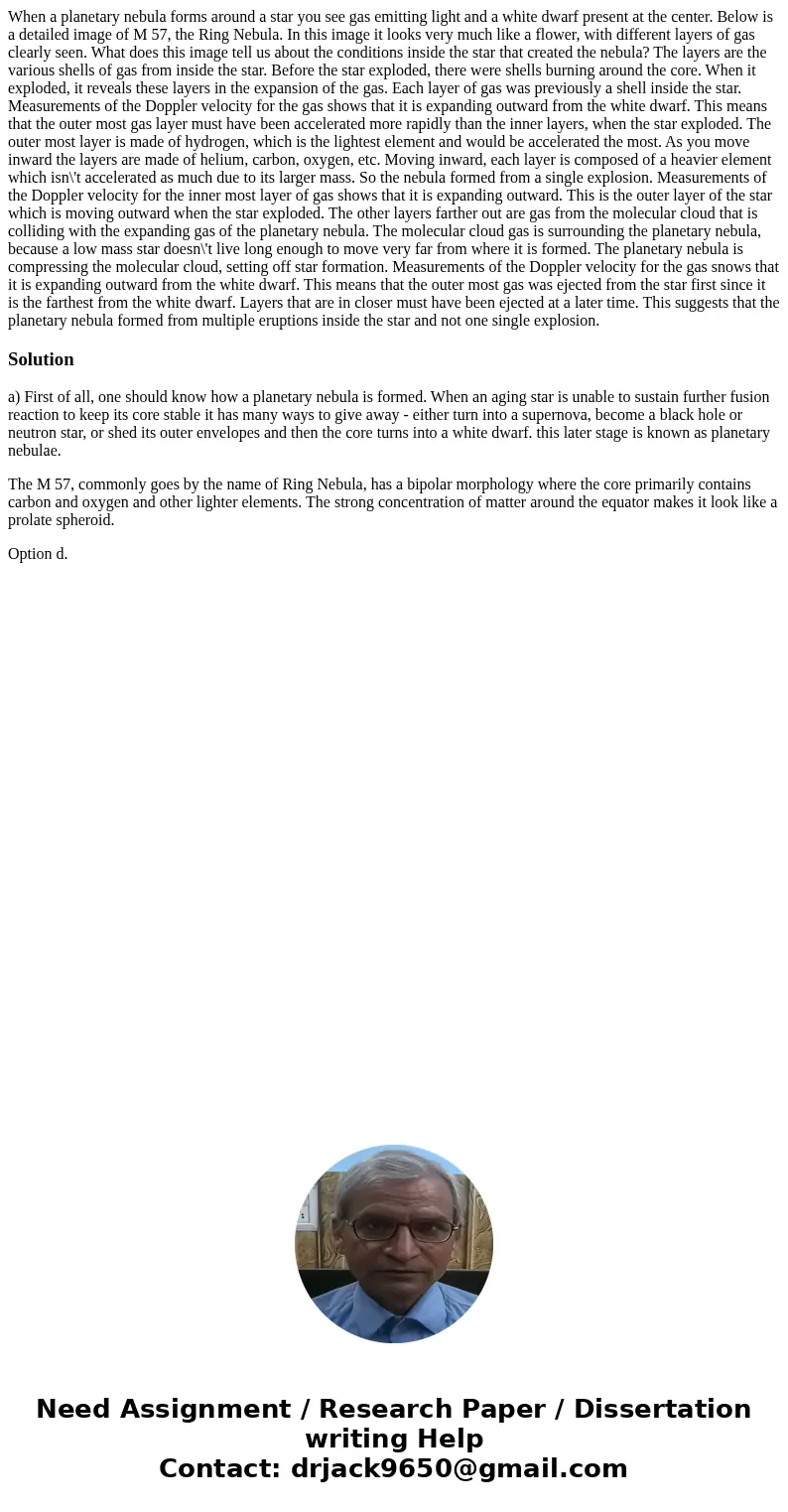When a planetary nebula forms around a star you see gas emit
When a planetary nebula forms around a star you see gas emitting light and a white dwarf present at the center. Below is a detailed image of M 57, the Ring Nebula. In this image it looks very much like a flower, with different layers of gas clearly seen. What does this image tell us about the conditions inside the star that created the nebula? The layers are the various shells of gas from inside the star. Before the star exploded, there were shells burning around the core. When it exploded, it reveals these layers in the expansion of the gas. Each layer of gas was previously a shell inside the star. Measurements of the Doppler velocity for the gas shows that it is expanding outward from the white dwarf. This means that the outer most gas layer must have been accelerated more rapidly than the inner layers, when the star exploded. The outer most layer is made of hydrogen, which is the lightest element and would be accelerated the most. As you move inward the layers are made of helium, carbon, oxygen, etc. Moving inward, each layer is composed of a heavier element which isn\'t accelerated as much due to its larger mass. So the nebula formed from a single explosion. Measurements of the Doppler velocity for the inner most layer of gas shows that it is expanding outward. This is the outer layer of the star which is moving outward when the star exploded. The other layers farther out are gas from the molecular cloud that is colliding with the expanding gas of the planetary nebula. The molecular cloud gas is surrounding the planetary nebula, because a low mass star doesn\'t live long enough to move very far from where it is formed. The planetary nebula is compressing the molecular cloud, setting off star formation. Measurements of the Doppler velocity for the gas snows that it is expanding outward from the white dwarf. This means that the outer most gas was ejected from the star first since it is the farthest from the white dwarf. Layers that are in closer must have been ejected at a later time. This suggests that the planetary nebula formed from multiple eruptions inside the star and not one single explosion.
Solution
a) First of all, one should know how a planetary nebula is formed. When an aging star is unable to sustain further fusion reaction to keep its core stable it has many ways to give away - either turn into a supernova, become a black hole or neutron star, or shed its outer envelopes and then the core turns into a white dwarf. this later stage is known as planetary nebulae.
The M 57, commonly goes by the name of Ring Nebula, has a bipolar morphology where the core primarily contains carbon and oxygen and other lighter elements. The strong concentration of matter around the equator makes it look like a prolate spheroid.
Option d.

 Homework Sourse
Homework Sourse